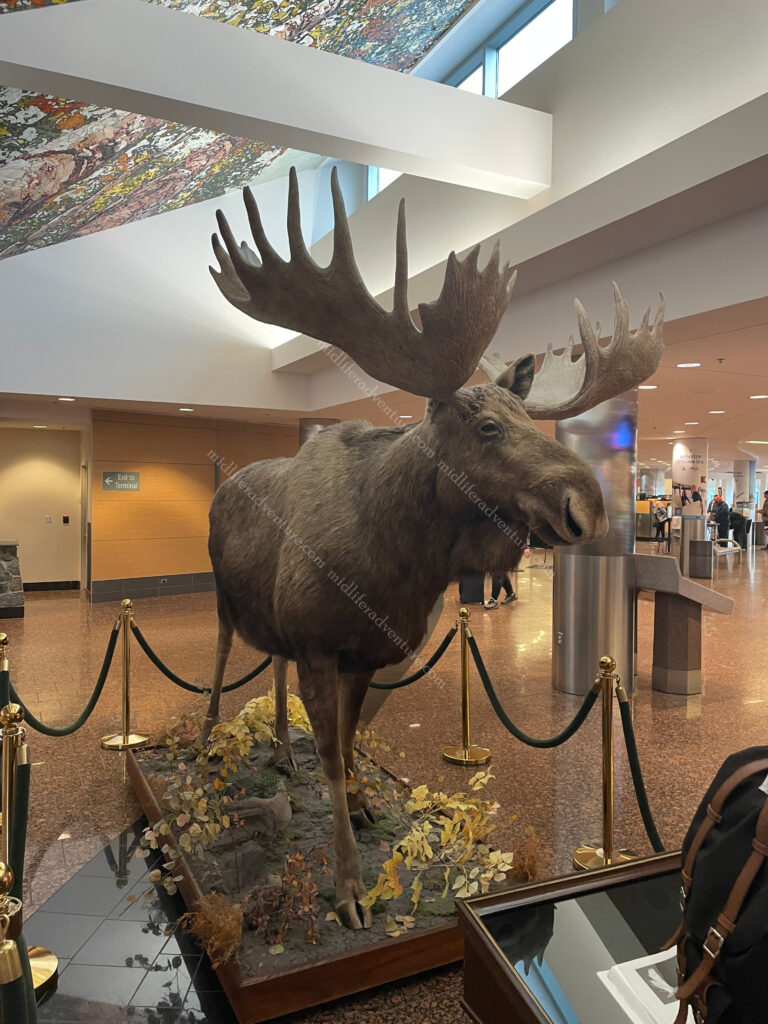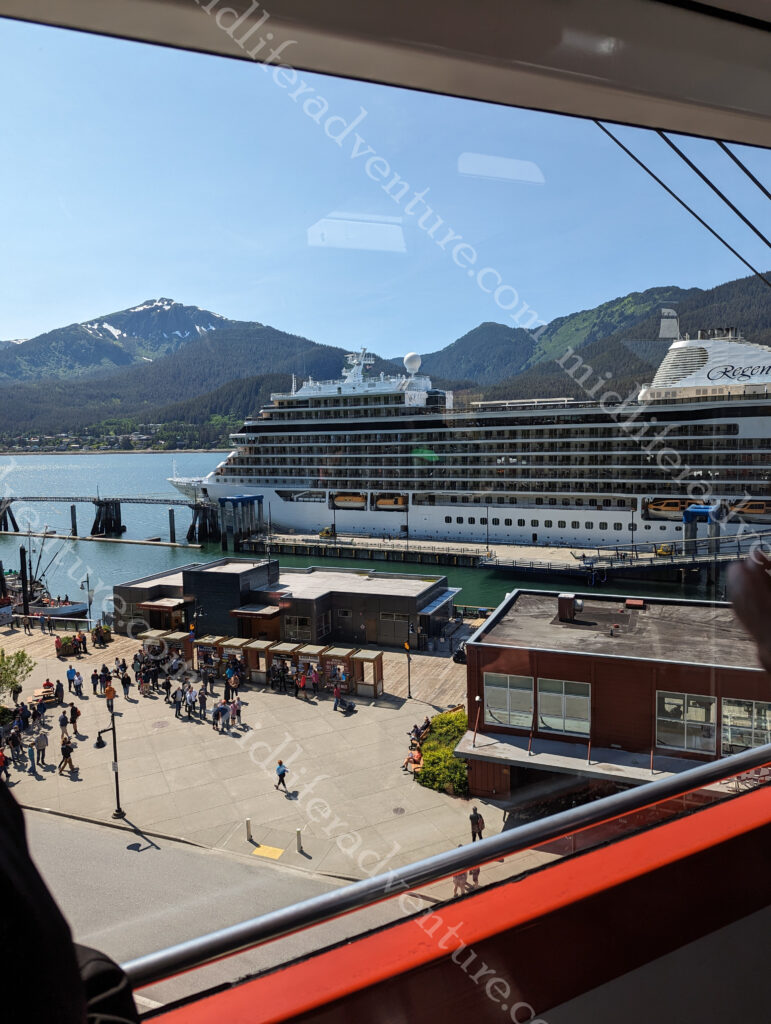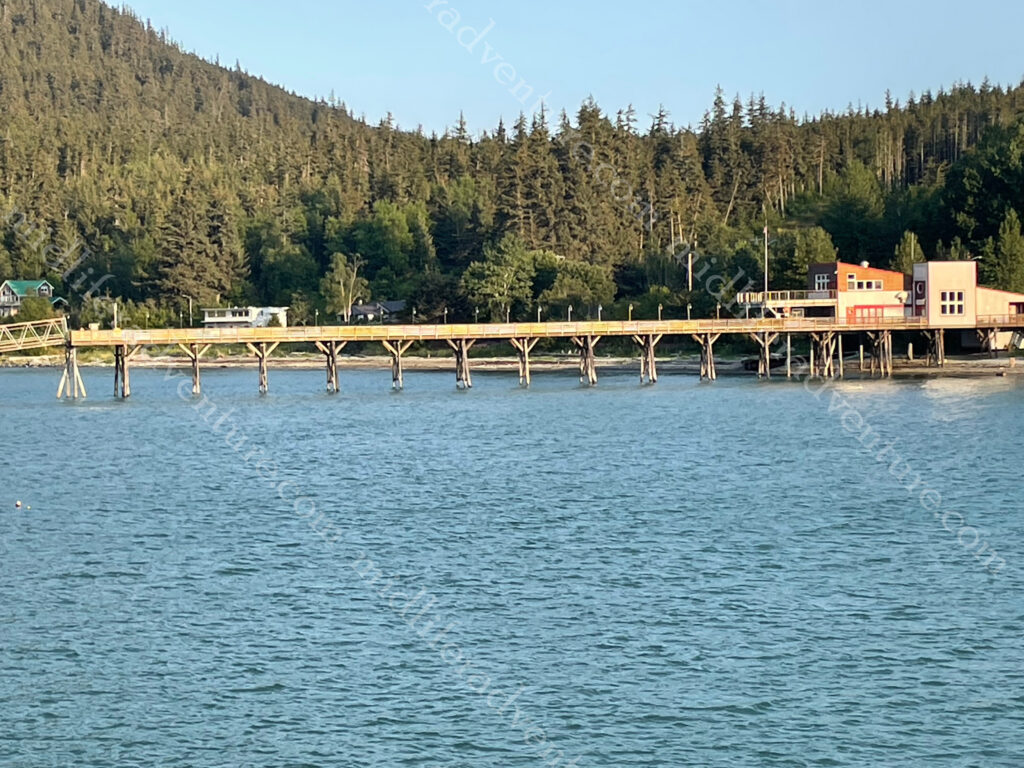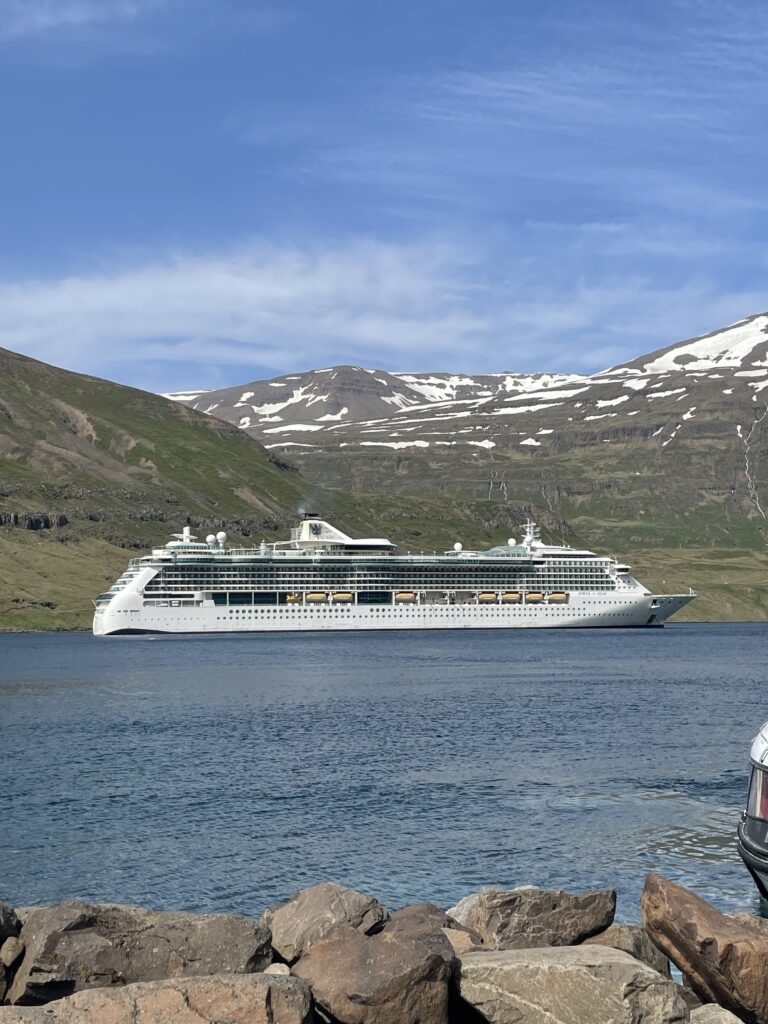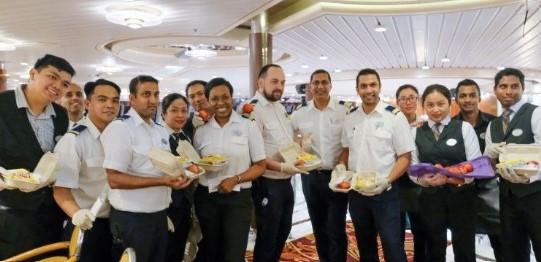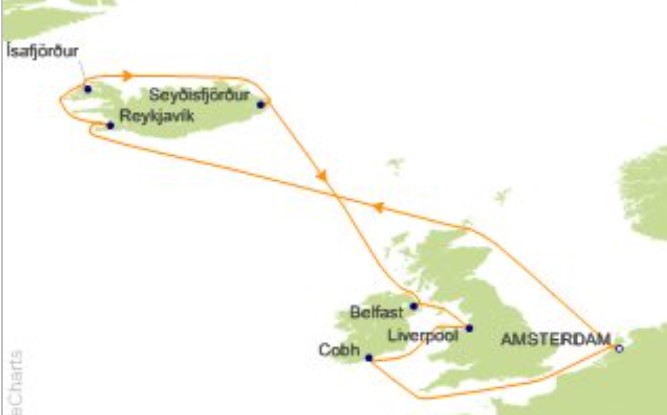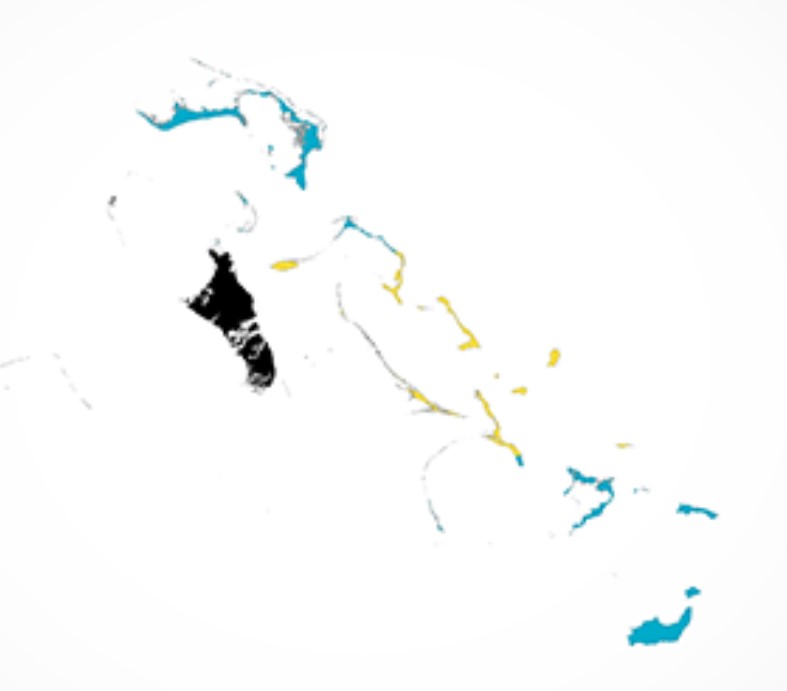
The Bahamas are a chain of more than 3000 islands, cays and islets in the Atlantic Ocean. They are part of the West Indies and sit just north of Cuba.
The Bahamas boasts some of the Caribbean’s most beautiful, clear blue water, white and pink sand beaches, warm temperatures and attractions galore. For these reasons, the Bahamas is one of the industry’s leading cruise port destinations, with the capital city of Nassau being one of the world’s busiest ports of call.
According to the Bahamas Ministry of Tourism, in 2024, the Bahamas is expected to host 5.6 million cruise passengers. This figure exceeds the 5.4 million the port hosted in prepandemic 2019. Nassau’s cruise port capacity increased from 20,000 passengers per day to more than 30,000 in May 2023, thanks to a $300 million renovation. The project expanded and revitalized the Prince George Wharf port and added a new berth, allowing it to accommodate six ships per day.
Nassau
Our first foray into the Bahamas was part of our 50th cruise with Jimmy and Claudia, where we set down in the capital Nassau on the island of New Providence. We were just one of several cruise ships to arrive on that day.
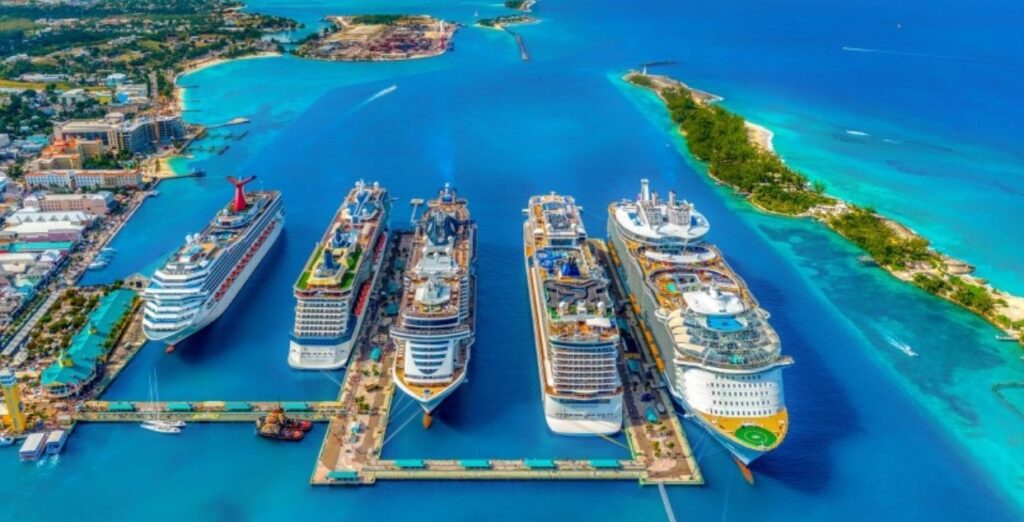
Nassau’s history is closely tied to the Caribbean pirate era of the 17th and 18th centuries. The town served as a pirate sanctuary until 1718 when British Governor (Woodes Rogers) expelled the buccaneers. Today, the downtown district offers 20 square blocks featuring architecture and monuments dating to this era, most within walking distance of the cruise pier.
The islands of the Bahamas were mostly deserted between 1513 and 1648 after almost all of the native residents were forcibly removed and enslaved or died from diseases brought from Europe. In 1649, English colonists arrived establishing settlements.
During the day, Nassau is incredibly safe with thousands of tourists, high police presence and hundreds of tour operators. You are safe to walk about uninterrupted and (apart from a few overzealous touts) unmolested. Sadly this situation does not continue once the sun goes down. Gang-on-gang violence has resulted in a high homicide rate primarily amongst the local population. But violent crime (burglaries, armed robberies, and sexual assaults), occurs in both tourist and non-tourist areas.









We hit the streets, chased the tourist things, climbed the Queens Staircase up to the fort and then wandered along to the other fort. We even had time to stop and sample some of the local brews.






The Queen’s Staircase, commonly referred to as the 66 steps, is a major landmark that is located in the Fort Fincastle Historic Complex in Nassau.
It was carved out of solid limestone rock by slaves between 1793 and 1794
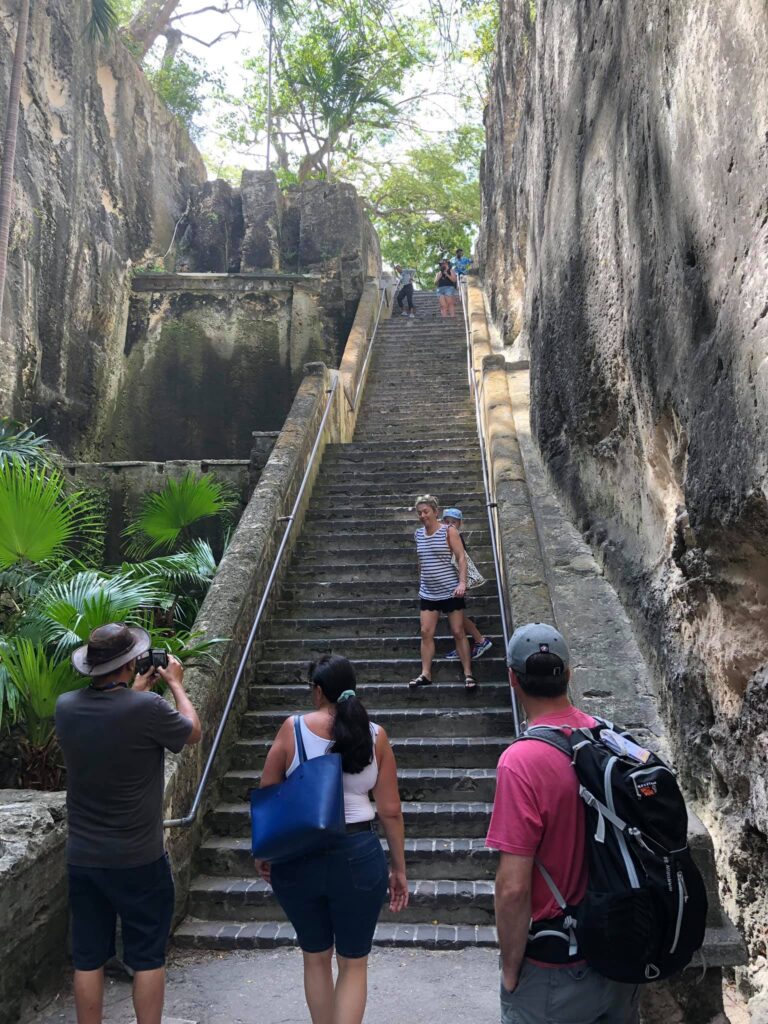
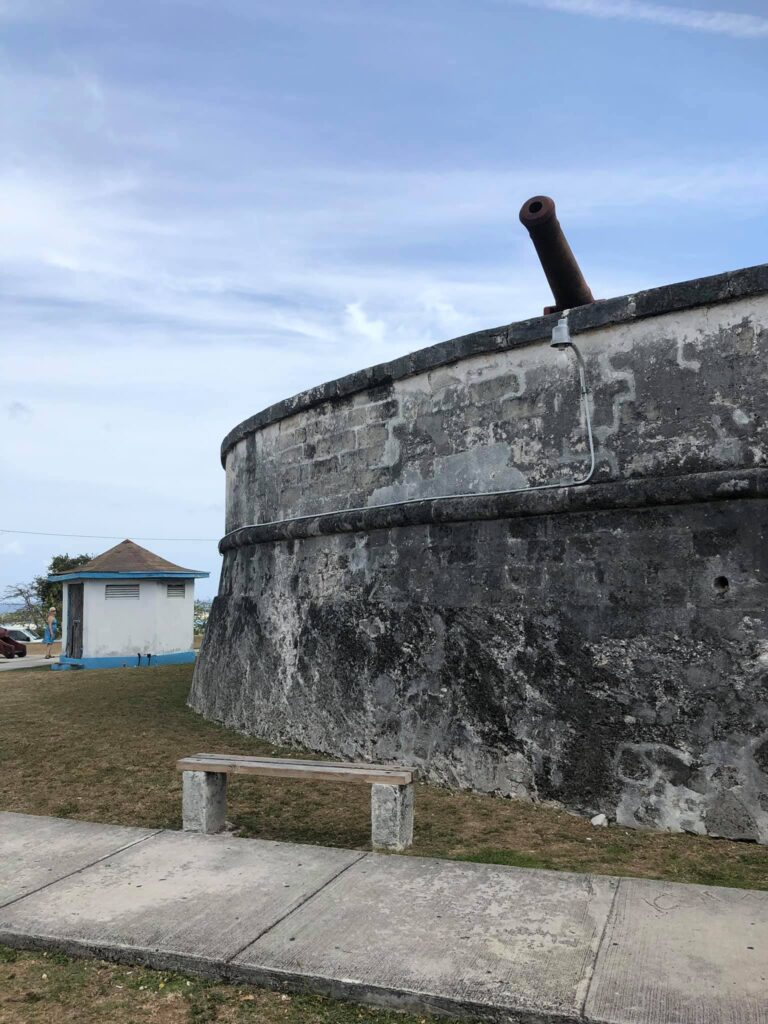
Fort Fincastle was built in around 1793 and was constructed of cut limestone.
It was placed on Bennet’s Hill to protect the Nassau town and its harbour from pirates.
Fort Charlotte is the largest battlement at 100 acres in size. It is so large that within the grounds are three different forts: Fort Charlotte in the east, Fort D’Arcy in the west, and Fort Stanley in the center. These massive stone structures feature cannons, moats, bridges, and other elements that make them fascinating to explore.
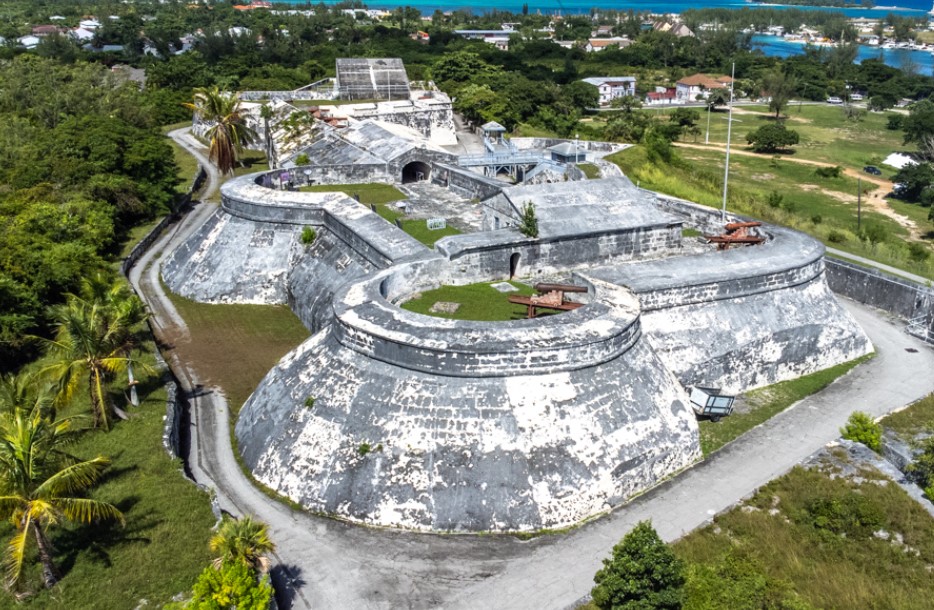
Fort Charlotte, It sits on a hill overlooking the west end of the harbour a mile west of downtown Nassau. From the fort you get an impressive view of Paradise Island, Nassau, and the harbour.
Fort Charlotte was built in 1788 and was named after the wife of King George III, Queen Saharia Charlotte. The middle bastion, Ft. Stanley and the western portion, Fort D’Arcy were added later. The fort has a moat, dungeons, underground passageways, and 42 cannons, which have never been fired in an act of aggression.
Nassau Mark II
Being a go-to port for the Caribbean, Nassau pops up frequently on many of the itineraries. Once you have done the big blitz (like we did on the first foray) there really isn’t much left to see or do in the main arrival part of town.
That said, beach lovers and travellers who enjoy water sports, diving or snorkelling will find any number of excursions and activities to suit their tastes. These tours can include glass-bottom and jet boat excursions, catamaran sailings, reef snorkelling, deep-sea fishing, scuba diving, encounters with sea lions, dolphins, stingrays and even swimming pigs. And of course, exclusive beach days with private cabanas.
Our second foray saw us arriving after the (Prince George Wharf) port redevelopment. $300 million had been invested into 11 acres of waterfront land reimagining the waterfront. This meant that the once dingy port had been significantly upgraded.
Guests to the new port are now welcomed by a modern arrivals plaza, theatre, entertainment venues, a museum, art gallery and new green spaces. Importantly there is an organised ground transportation area, and state-of-the-art security. Oh and don’t forget the retail, food and beverage outlets.
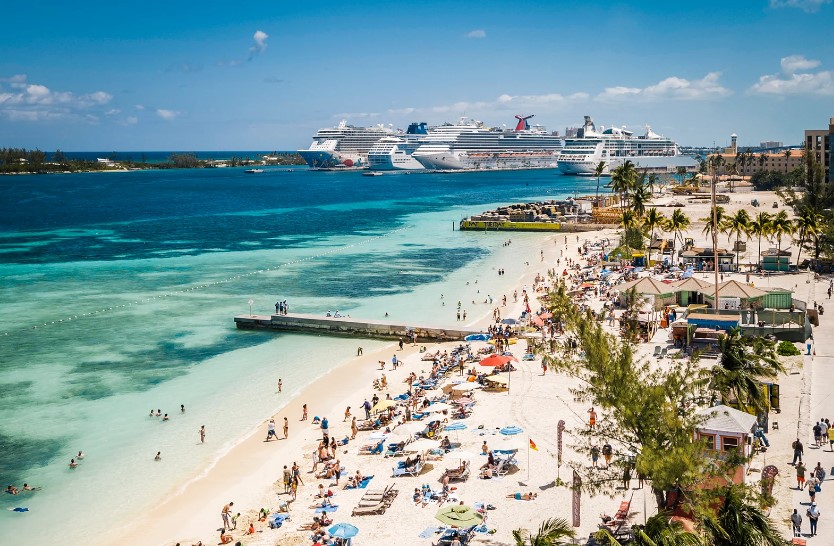
Junkanoo Beach is the closest walk (about a 15-minutes) from the cruise port and
The Nassau Straw Market was once an authentic market selling plaited, braided, and woven items synonymous with the subsistence lifestyle. Now it is a tourist trap selling straw craft souvenirs(hats, bags, mats, dolls etc) along with conch shell jewellery, and wood carvings.

Coco Cay
This time around we found ourselves being delivered at a place called Coco Cay. It is an entirely manufactured island that is owned and operated by the Royal Caribbean company solely for the use of their ships. It is advertised as Perfect Day at Coco Cay, and surprise surprise, that is the first thing that you see.



Looking back from the pier we saw our ship next to one of the newest and biggest ships of the Royal Caribbean fleet. The difference was incredible, especially when you think that our (little) one is 13 floors high. But the new one is about twice the width too.
From here you enter into the world of waterparks, theme parks, shopping and beach walks where the tourist is king. Everything on the island has been put there to amuse, entertain or fleece the clientele from a cruise ship.





Being a company island, the food and drinks kick in on the company coin. So unless you are after something extra, everything else is free. There are some individual, over the water, cabanas for rent at a price of around $2000 USD per day. But a beach chair ranged from free to $20 depending on where it was. The trinket shops were extra but the food and drink (mostly) went on your cruise card.









The calm side of the island had a kid’s paddle beach sheltered on all sides. In the centre lives the largest pool in the Caribbean. This has the obligatory swim up bar and places to sit. But the private DJ playing tunes was the bit that did us in. Our beach time is preferred quiet and not with somebody else’s choice of music doing our heads in.


Coco Cay was a nice touch and a very clever commercial decision by the company. They have found a way to build a whole tourism network that purely feeds funds into the corporate machine. They feed the machine with at least one cruise ship arriving every day and more often than not two.
Not something that you would want every day, but as a change it was quite nice.
Royal Beach Club Paradise Island
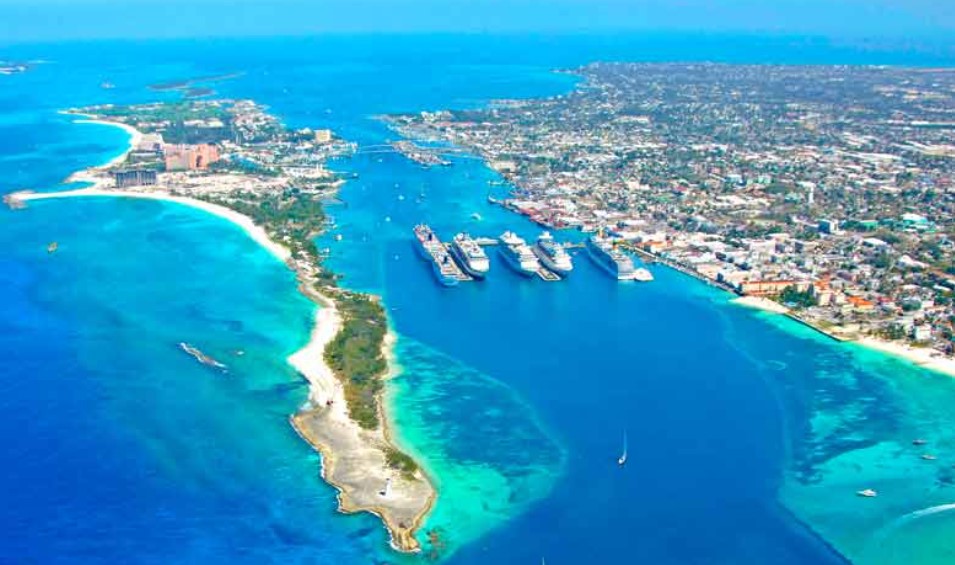
Cleverly, our most recent foray into Nassau revealed that the company (Royal Caribbean) had also bought the (17 acres) strip of land (on Paradise Island) opposite the port.
The intent is to develop the ultimate beach day – The Royal Beach Club Paradise Island. Like Coco Cay, the area will offer private beaches taking in the turquoise-blue waters and white sand beaches, cabanas, pools, activities, live music, and local artisans.
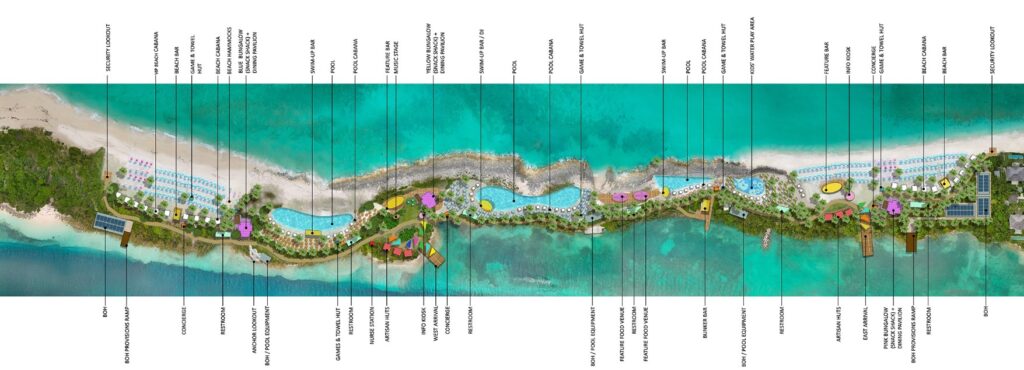
The resort is due to open in the summer of 2025.







